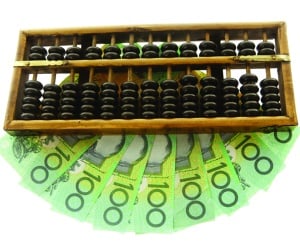The Australian Securities & Investments Commission (ASIC) has revealed further details about its cost recovery model and annual levies that will affect all industry sectors under ASIC’s regulatory jurisdictions.
ASIC senior executive leader of deposit takers, credit & insurers
Michael Saadat spoke on the scheme at the Credit & Investments Ombudsman’s (CIO’s) Dispute Resolution Conference 2017 in Sydney on Tuesday (12 September).
He revealed that certain entities under ASIC will be slugged with two levies and gave a rough estimate of how much credit intermediaries will be charged per credit rep. These changes were good for the industry, he said.
“Industry funding for ASIC will increase transparency, making industry more accountable for its behaviour by ensuring that those who are creating the need for regulation bear the costs. It is a critical component of the government’s plan to improve consumer outcomes in the financial services sector.”
Fees and more fees
For credit providers, there will be a minimum levy of $2,000 plus 15 cents per $10,000 of credit provided greater than $100m, excluding small amount credit contracts.
For licensed credit intermediaries, there will be a $1,000 minimum levy plus a graduated component based on the number of authorised representatives under the intermediary as of 30 June 2018.
The graduated component had yet to be fully determined, Saadat said.
“It’s based on the total number of credit reps that will be in place at the end of June next year. As a guide, we expect it to be between $150 and $250.”
Licensees that act as credit providers and intermediaries will pay both levies, he added.
Responding to questions about how costs will be determined, Saadat said that ASIC had no control over the levies as the cost recovery scheme was a government initiative.
“Our budget allocation is set by the government. The government then has passed legislation to recover those costs from the sectors that we regulate. It is a government decision.”
Rolling out the levy
While further details will be released in the coming months, Saadat also gave a rough guide to how the scheme will be implemented. In January 2018, an online portal will be launched to collect information from ASIC’s regulated population to allow invoices to be calculated.
“Invoices will be based on the number of regulated entities in a sector and other information provided by industry via the portal.”
In April 2018, ASIC will then publish “indicative levies” for FY17/18. Between July and October 2018, all regulated entities will complete an online form for that financial year.
“In January 2019, the first invoices recovering costs for ASIC’s regulatory services for the 2017/18 financial year will be issued and entities will have until the end of February 2019 to pay their invoice,” Saadat said.
This reflects that the model is an “ex-post model,” he added, meaning that invoices will be based on actual costs incurred in the previous year rather than estimates of future costs.
Related stories:
ASIC cost recovery framework finalised
ASIC on triple review rampage
Credit services providers to be hit with ASIC levy


